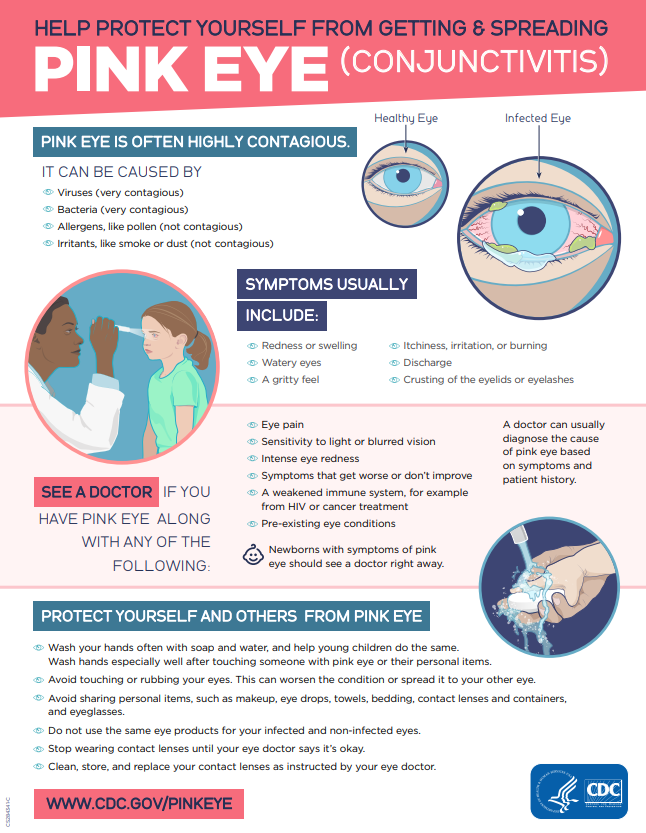We are seeing an increased number of students with conjunctivitis or “pink eye” at school.
Pink eye is an inflammation of the inside of the eyelid (conjunctiva) and the white part of the eyeball. This inflammation makes blood vessels more visible and gives the eye a pink or reddish color.
Please watch your child for the following symptoms. If your child has the symptoms below, please follow up with your child’s healthcare provider for guidance and do not send to school until they are seen and evaluated. A note from your child’s healthcare provider is required to return to school
- Redness or swelling of the white of the eye or inside the eyelids
- An increased amount of tears
- Eye discharge which may be clear, yellow, white, or green
- Itchy, irritated, and/or burning eyes
- Gritty feeling in the eye
- Crusting of the eyelids or lashes
- Contact lenses that feel uncomfortable and/or do not stay in place on the eye
There are four main causes of pink eye. Sometimes it is hard to know the exact cause of pink eye because some signs and symptoms may be the same no matter the cause.
- Viruses (like the common cold).
- Bacteria
- Allergens (from pollen, pets, or dust mites)
- Irritants (like swimming pool chlorine)
Treatment depends on the reason for conjunctivitis (bacterial, viral or allergic). It is important to talk with your child’s healthcare provider (doctor, physician’s assistant, or nurse) so they can tell you if your child may need medicine or stay home from school.
Pink eye is spread from person to person in different ways. It is usually spread through:
- Contact from touching or shaking hands
- The air by coughing and sneezing
- Touching an object or surface with germs on it, then rubbing your eyes before washing your hands
Washing your hands, covering your mouth when you cough or sneeze, and not sharing food and drinks with others can help control the spread of pink eye.
Antibiotics do not help pink eye unless it is caused by bacteria. Whether or not your child needs medicine for pink eye is up to your doctor. Information from the CDC about Pink Eye is attached.
Please call the school’s Health Office if you have any questions or concerns.


